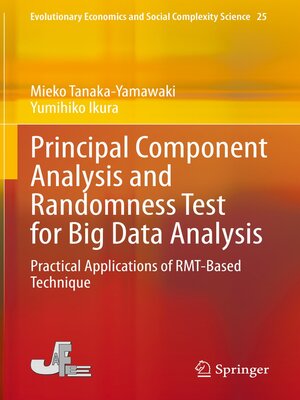Principal Component Analysis and Randomness Test for Big Data Analysis
ebook ∣ Practical Applications of RMT-Based Technique · Evolutionary Economics and Social Complexity Science
By Mieko Tanaka-Yamawaki

Sign up to save your library
With an OverDrive account, you can save your favorite libraries for at-a-glance information about availability. Find out more about OverDrive accounts.
Find this title in Libby, the library reading app by OverDrive.



Search for a digital library with this title
Title found at these libraries:
| Loading... |
This book presents the novel approach of analyzing large-sized rectangular-shaped numerical data (so-called big data). The essence of this approach is to grasp the "meaning" of the data instantly, without getting into the details of individual data. Unlike conventional approaches of principal component analysis, randomness tests, and visualization methods, the authors' approach has the benefits of universality and simplicity of data analysis, regardless of data types, structures, or specific field of science.
First, mathematical preparation is described. The RMT-PCA and the RMT-test utilize the cross-correlation matrix of time series, C = XXT, where X represents a rectangular matrix of N rows and L columns and XT represents the transverse matrix of X. Because C is symmetric, namely, C = CT, it can be converted to a diagonal matrix of eigenvalues by a similarity transformation SCS-1 = SCST using an orthogonal matrix S. When N is significantly large, the histogram of the eigenvalue distribution can be compared to the theoretical formula derived in the context of the random matrix theory (RMT, in abbreviation).
Then the RMT-PCA applied to high-frequency stock prices in Japanese and American markets is dealt with. This approach proves its effectiveness in extracting "trendy" business sectors of the financial market over the prescribed time scale. In this case, X consists of N stock- prices of length L, and the correlation matrix C is an N by N square matrix, whose element at the i-th row and j-th column is the inner product of the price time series of the length L of the i-th stock and the j-th stock of the equal length L.
Next, the RMT-test is applied to measure randomness of various random number generators, including algorithmically generated random numbers and physically generated random numbers.
The book concludes by demonstrating two applications of the RMT-test: (1) a comparison of hash functions, and (2) stock prediction by means of randomness, including a new index of off-randomness related to market decline.






